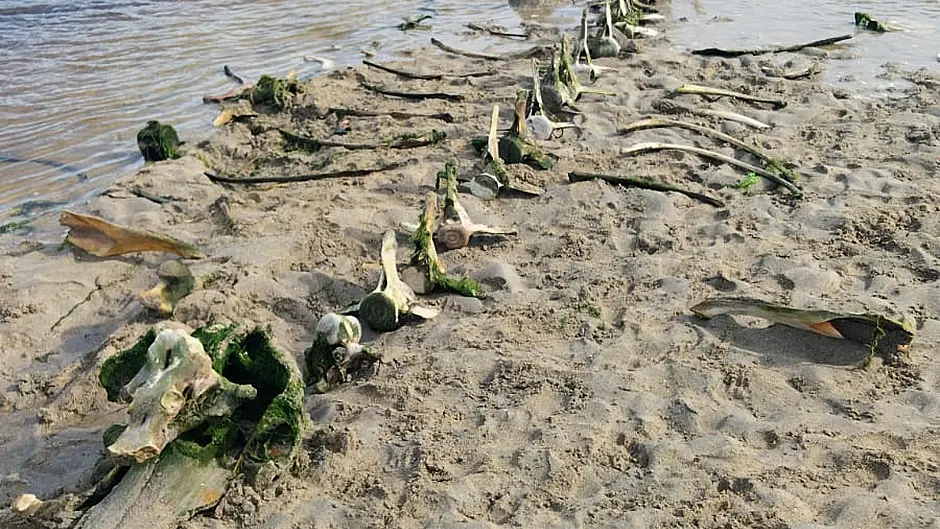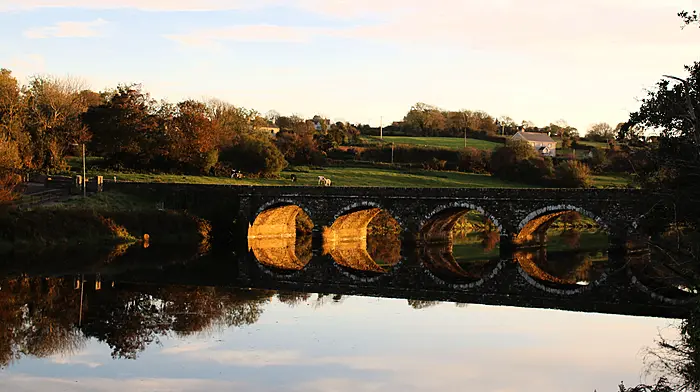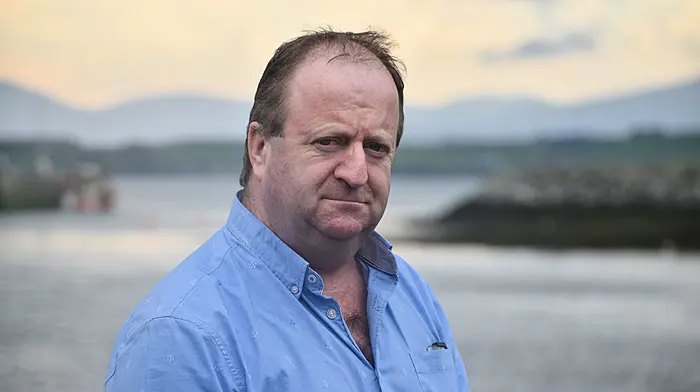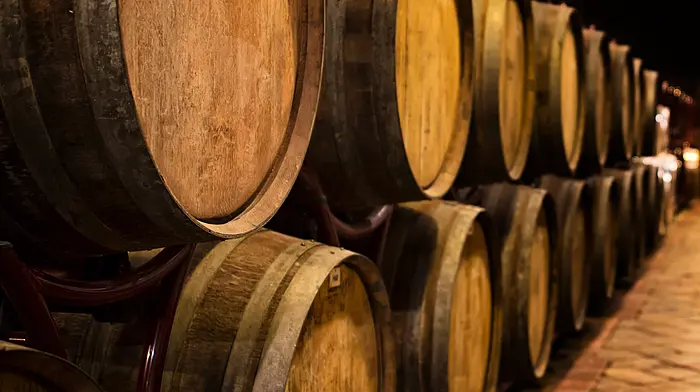There’s a mystery surrounding the discovery of whale bones at Barleycove Beach.
The discovery at the weekend had Pádraig Whooley, the Irish Whale and Dolphin Group’s sightings officer, scratching his head.
The almost intact skeletal remains of what looks large enough to be a whale has been described by Pádraig to be ‘amazing.’
‘It’s normal for whale bones to wash up all the time,’ he said, ‘but this looks almost a complete skeleton.
The bones, found by children at the weekend, is an amazing photograph, so good in fact that Pádraig is wondering if it has been laid out deliberately.
He said he’d need to measure it out before he could get a better understanding of what it is. He’s also keen to see the skull as well to see if it has teeth marks, which would tell him if it is a toothed-whale.
‘At a glance,’ he said, ‘it looks too big to be a dolphin or a porpoise. It is a whale of some species. It looks to be comfortably bigger than 20ft.
‘To me it looks as if somebody has actually laid it out, as if somebody had done a lot of work – the way the ribs are all neatly displayed.
If an animal died naturally, the ribs would be scattered all over the place. The ribs wouldn’t just be lying like that; they'd be scattered for kilometres around.
They certainly wouldn’t be laid out like that, exactly as they are anatomically. Whales don’t die like that and when they die scavengers rip them apart and the bones end up all over the place.’
The vertebrae would be all over the place too,’ he added. ‘They wouldn’t be standing up neatly. They’d be all higgledy-piggledy and strew all over the place.’
He said it was his opinion that ‘Mother Nature didn’t leave it laid out like that – someone is working on that animal.’
Pádraig said he hoped to take a closer look at the bones in Barleycove, but, for now, he said his attention was focused on the three very-much alive bottlenose whales off Eagle Point in Bantry Bay.
The sightings officer said it was the second sighting of Northern bottlenose whales (Hyperoodon ampullatus) this week, just four days after a pair were recorded off Great Blasket Island.
He said three animals were filmed just off Eagle Point campsite in Ballylickey on Sunday.
Northern bottlenose whales are one of the deep diving beaked whales that make up the second largest cetacean family (Ziphiidae) and can routinely dive to depths of 1,500 mts, he said.
The IWDG spokesperson expressed concern that even the deep waters of Bantry Bay can provide neither suitable habitat or food for this squid feeder.
‘We are also mindful,’ he said, ‘that another Northern bottlenose whale live stranded and died yesterday in Rustington, West Sussex, UK and it’s possible that these events are somehow connected.
‘Our hope for now is that all three whales make it out into open water and the Atlantic’s deep canyon systems that are their preferred habitat.
He described the animals as being quite similar in profile and length to a minke whale, but brownish in colour and with a very obvious bulbous melon and a very steep flat forehead. They often show a short blow and can be very active with long bouts of breaching.








